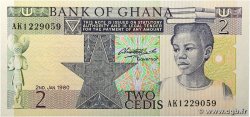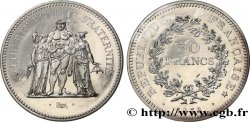No disponible.
Artículo vendido en nuestra tienda (2021)
Precio : 55.00 €
Artículo vendido en nuestra tienda (2021)
Precio : 55.00 €
Tipo : Médaille, Vénus d’Urbin par Titien
Fecha: n.d.
Metal: plata
Milésimas de pureza : 800 ‰
Diámetro: 50,5 mm
Eje de acuñación: 12 h.
Acuñador SHOYER William
Peso: 65,24 g.
Canto: lisse + ARGENT 1ER TITRE + losange + CRABE
Cuño: Crabe
Comentarios sobre el estado de conservación:
Traces de manipulation et d’oxydation irisée sur la tranche, tâches au revers
Anverso
Titulatura del anverso: ANÉPIGRAPHE.
Descripción del anverso: Représentation d’une peinture de Titien (1538).
Monogramme du graveur.
Reverso
Titulatura del reverso: LA VENUS / D’URBIN / 1538 / TITIEN.
Descripción del reverso: Légende en 4 lignes entourée d’une frise végétale.
Comentario
Exemplaire issu du médaillier Franklin qui met à l’honneur un tableau de Titien, la Vénus d’Urbin :La Vénus d'Urbin est une commande de Guidobaldo della Rovere, l'héritier de Francesco Maria della Rovere, le duc d'Urbino. Le duc a déjà acheté, deux ans plus tôt, le portrait du même modèle, La Bella. Une lettre de Guidobaldo della Rovere parle de la donna nuda, et cette tournure suffit à montrer que le sujet mythologique n'est ici qu'un prétexte. Le repos de Vénus permet en effet de mettre en évidence la beauté et l'attrait du corps de la femme. Au XVIe siècle, on attribue une puissance magique aux images. Il est recommandé d'accrocher de belles nudités, homme ou femme, dans les chambres à coucher des époux. Si la femme regarde ces beaux corps au moment de la fécondation, son enfant sera plus beau.
Le tableau représente probablement la déesse Vénus entièrement nue. Elle est probablement inspirée de la Vénus de Dresde appelée aussi la Vénus endormie de Giorgione. La femme nue se présente allongée légèrement en appui sur le bras droit, la tête relevée par un coussin, cheveux dénoués sur l’épaule, quelques roses entre les doigts. Elle s'offre entièrement aux regards. Seul son sexe est caché de sa main gauche d'une manière à la fois naturelle et pudique. Un petit chien lové à ses pieds. Le décor est celui d'un palais de la Renaissance. En arrière-plan, deux servantes, s’affairent autour d’un coffre à vêtements. Les nus dans les couvercles des coffres étaient une pratique florentine du XVe siècle issue du Moyen Âge mais jamais pratiquée dans la peinture vénitienne. On pourrait presque penser que la Vénus est sortie nue du coffre de mariage.
Ce tableau est conservé à la galerie des Offices à Florence en Italie.
Médaille sculptée par William Shoyer.
Théoriquement, le poinçon crabe est censé indiquer un titrage à 800 millièmes.
example from the Franklin medal maker which highlights a painting by Titian, the Venus of Urbino: The Venus of Urbino is a commission from Guidobaldo della Rovere, the heir of Francesco Maria della Rovere, the Duke of Urbino. The Duke had already bought, two years earlier, the portrait of the same model, La Bella. A letter from Guidobaldo della Rovere speaks of the naked woman, and this turn of phrase is enough to show that the mythological subject is here only a pretext.. The repose of Venus in fact allows to highlight the beauty and the attraction of the woman's body. In the 16th century, images were attributed a magical power. It is recommended to hang beautiful nudes, male or female, in the bedrooms of the spouses.. If the woman looks at these beautiful bodies at the time of fertilization, her child will be more beautiful..
The painting probably depicts the goddess Venus completely nude. It is probably inspired by the Venus of Dresden, also called the Sleeping Venus of Giorgione.. The naked woman appears lying down, leaning slightly on her right arm, her head raised by a cushion, her hair loose over her shoulder, a few roses between her fingers.. She offers herself entirely to the gaze. Only his penis is hidden with his left hand in a way that is both natural and modest.. A small dog curled up at his feet. The decor is that of a Renaissance palace. In the background, two maids are busy around a clothes chest.. Nudes on chest lids were a 15th-century Florentine practice that originated in the Middle Ages but was never practiced in Venetian painting.. One might almost think that Venus came out naked from the wedding chest.
This painting is kept in the Uffizi Gallery in Florence, Italy.
Medal sculpted by William Shoyer.
Theoretically, the crab hallmark is supposed to indicate a fineness of 800 thousandths.
Le tableau représente probablement la déesse Vénus entièrement nue. Elle est probablement inspirée de la Vénus de Dresde appelée aussi la Vénus endormie de Giorgione. La femme nue se présente allongée légèrement en appui sur le bras droit, la tête relevée par un coussin, cheveux dénoués sur l’épaule, quelques roses entre les doigts. Elle s'offre entièrement aux regards. Seul son sexe est caché de sa main gauche d'une manière à la fois naturelle et pudique. Un petit chien lové à ses pieds. Le décor est celui d'un palais de la Renaissance. En arrière-plan, deux servantes, s’affairent autour d’un coffre à vêtements. Les nus dans les couvercles des coffres étaient une pratique florentine du XVe siècle issue du Moyen Âge mais jamais pratiquée dans la peinture vénitienne. On pourrait presque penser que la Vénus est sortie nue du coffre de mariage.
Ce tableau est conservé à la galerie des Offices à Florence en Italie.
Médaille sculptée par William Shoyer.
Théoriquement, le poinçon crabe est censé indiquer un titrage à 800 millièmes.
example from the Franklin medal maker which highlights a painting by Titian, the Venus of Urbino: The Venus of Urbino is a commission from Guidobaldo della Rovere, the heir of Francesco Maria della Rovere, the Duke of Urbino. The Duke had already bought, two years earlier, the portrait of the same model, La Bella. A letter from Guidobaldo della Rovere speaks of the naked woman, and this turn of phrase is enough to show that the mythological subject is here only a pretext.. The repose of Venus in fact allows to highlight the beauty and the attraction of the woman's body. In the 16th century, images were attributed a magical power. It is recommended to hang beautiful nudes, male or female, in the bedrooms of the spouses.. If the woman looks at these beautiful bodies at the time of fertilization, her child will be more beautiful..
The painting probably depicts the goddess Venus completely nude. It is probably inspired by the Venus of Dresden, also called the Sleeping Venus of Giorgione.. The naked woman appears lying down, leaning slightly on her right arm, her head raised by a cushion, her hair loose over her shoulder, a few roses between her fingers.. She offers herself entirely to the gaze. Only his penis is hidden with his left hand in a way that is both natural and modest.. A small dog curled up at his feet. The decor is that of a Renaissance palace. In the background, two maids are busy around a clothes chest.. Nudes on chest lids were a 15th-century Florentine practice that originated in the Middle Ages but was never practiced in Venetian painting.. One might almost think that Venus came out naked from the wedding chest.
This painting is kept in the Uffizi Gallery in Florence, Italy.
Medal sculpted by William Shoyer.
Theoretically, the crab hallmark is supposed to indicate a fineness of 800 thousandths.








 Informar de un error
Informar de un error Imprimir la página
Imprimir la página Comparte mi selección
Comparte mi selección Haz una pregunta
Haz una pregunta Consignar / vender
Consignar / vender
 Descriptivo
Descriptivo











